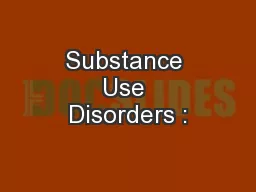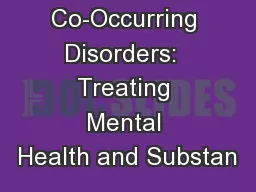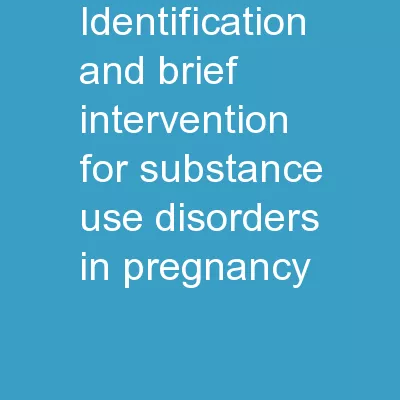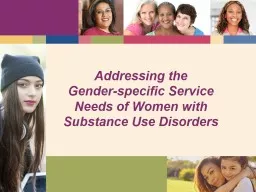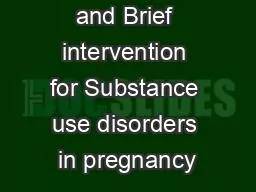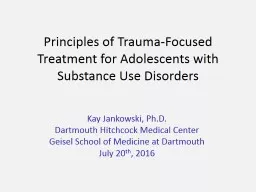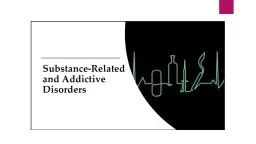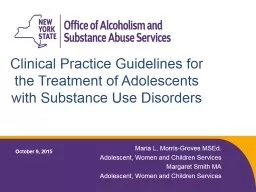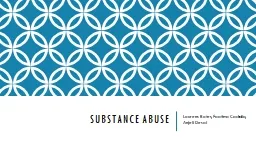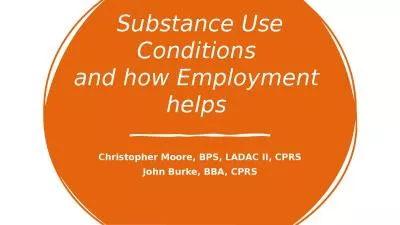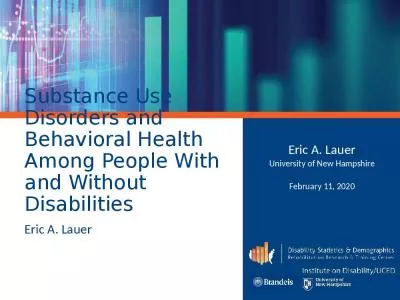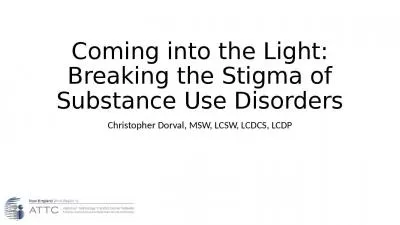PPT-Substance Use Disorders :
Author : phoebe-click | Published Date : 2018-11-10
Women Pregnancy and the Family Jennifer Hudson MS Certified Advanced Alcohol and Drug Counselor Substance Use Disorders SUDs Substance use disorders defined by
Presentation Embed Code
Download Presentation
Download Presentation The PPT/PDF document "Substance Use Disorders :" is the property of its rightful owner. Permission is granted to download and print the materials on this website for personal, non-commercial use only, and to display it on your personal computer provided you do not modify the materials and that you retain all copyright notices contained in the materials. By downloading content from our website, you accept the terms of this agreement.
Substance Use Disorders :: Transcript
Download Rules Of Document
"Substance Use Disorders :"The content belongs to its owner. You may download and print it for personal use, without modification, and keep all copyright notices. By downloading, you agree to these terms.
Related Documents

